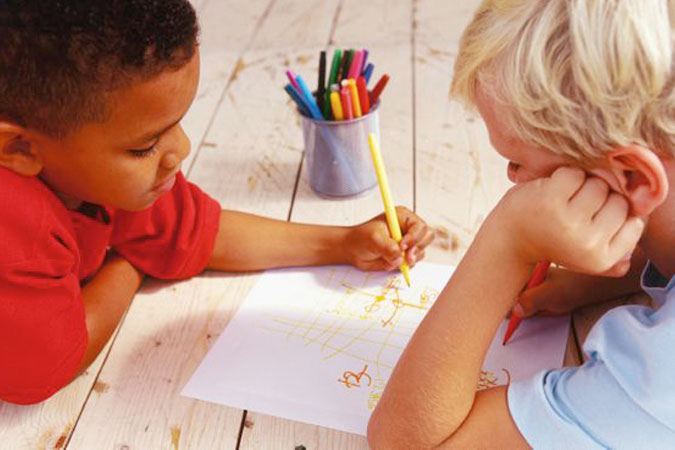
I give my first-grade religious education students the same assignment every week at the end of class, which consists of three things: Be sweet, be smart, and make good choices. For the first few classes, it’s novel, but within a few weeks, they will repeat the assignment along with me. (The parents love it, by the way.)
I want my students to understand that the behavior I expect in class on Sunday mornings doesn’t end when they leave class. I remind them that being a Christian is a 24/7 job, and it’s not always easy out in the world.
When we do our review at the beginning of every class, I ask the children to share their assignment from the week before. I ask, “Who did something sweet this week?” or, “What good choices did you make?” This 360-degree perspective can serve as a reminder that what we expect of ourselves throughout the week we will expect in our classroom that day.
Setting clear expectations and developing class rules during the first class session and reinforcing them in subsequent sessions is a good idea. I ask the children to help develop our rules, and my co-catechist writes them on a big poster so everyone can see them. I ask the students why these rules are good for us to follow. These rules do more than make class run smoothly. I remind the children that there are certain expectations for us as Catholic Christians in all the parts of our lives, and class is just one more place to practice them.
For example, while the concept of sharing won’t be new to them, showing the children how sharing relates to Christian behavior might be. Why do we share? Who do we share with? It’s important to be generous when sharing crayons with our classmates, just as it is when sharing food or warm coats with those in need. Why is listening important? We have endless examples of this in Bible stories. (My students are particularly fond of the story of Martha and Mary told in Luke 10:38–42.) When the students clean up and put trash in the recycle bin, it’s a reminder that we are called to care for creation. Every day, we make small and large choices; I want my students to recognize their good choices as behaving in a way that pleases God.
An established set of classroom rules makes it easier to remain consistent from week to week. My co-catechist and I can be confident that we have the same expectations for our students, regardless of who teaches that week. We keep our list of class rules handy and review them if we think the class needs a refresher (such as after Christmas or Easter break). If we get a new student or have a substitute, this poster is an easy way to get everyone up to speed quickly.
We publicly compliment a child who exhibits good behavior, especially if it followed some corrective discussion. It can be as easy as, “Thank you for raising your hand this time!” or, “I love seeing everyone sharing crayons!” On particularly good weeks, I include a sentence or two in my e-mails to parents, letting them know how kind or focused their children were that day.
Each week before class, I take a moment to center myself in prayer and focus on being a good role model, especially with my own behavior. I remind myself that I need to really listen when a student is talking. My spoken and body language must be kind, even on those less-than-great days. When I do my post-class reflection, I incorporate these things, so that if I did them well, I’ll recognize it and be grateful for it, and if there was a moment when I fell a bit short, I can recalibrate for the next session.





It is so easy to fall into the habit of just correcting the children who exhibit behavior we don’t want. I think over time I have found it is just as important to “compliment a child who exhibits good behavior, especially if it followed some corrective discussion” as you suggest. Thanks for the good ideas. 🙂